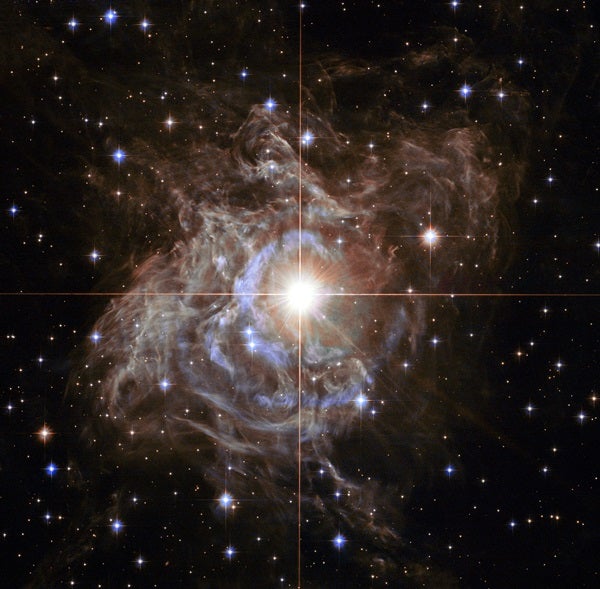The stars shining in the night sky might seem steady and reliable, but in truth, they are constantly changing and evolving. Out of the 100 billion or so stars that inhabit the Milky Way, a little more than 400,900 are classified as variable, meaning they change in brightness over time.
Of those hundreds of thousands of variables catalogued in our galaxy, however, only seven belong to a class called Triple Mode high amplitude delta Scuti, or HADS(B), stars — and that seventh was just recently discovered by a high school student during a summer astronomy program at Southern Methodist University in Dallas.
The star, roughly the size of our Sun or possibly larger, is about 7,000 light-years away in the constellation Pegasus. It currently has only a catalog name: ROTSE1 J232056.45+345150.9. The name comes in part from the telescope used to discover it, the ROTSE-I telescope at Los Alamos National Laboratory in New Mexico.
While examining data from the telescope taken in September of 2000, Plano Senior High School student Derek Hornung noticed the star’s strange light curve, which shows the star’s brightness over time. A non-variable star’s light curve is simply a straight line, unchanging as the hours, days, and months go by. But a variable star exhibits periodic changes in brightness over the course of hours or days, creating a recognizable repeating pattern. Variable stars are classified by the patterns their light curves make, and named after the first star of each type discovered. Delta Scuti variables are thus named after the star delta Scuti.
But there’s more to this story, still. The star is not only a delta Scuti variable, of which there are thousands known, but it is also a rare type within the delta Scuti class, a HADS(B) star. HADS(B) stars show asymmetric light curves that change brightness quickly over time. These stars are pulsating in two modes, which means the star is expanding in two directions at once. There are only 114 HADS(B) stars currently known. Rarer still are Triple Mode HADS(B) stars, of which there were only six previously identified in the Milky way. Triple Mode HADS(B) stars pulsate in not two, but three directions at once. For ROTSE1 J232056.45+345150.9, this process repeats itself every 2.5 hours.
Eric Guzman, a physics graduate student from the University of Texas at Dallas entering SMU’s graduate program, helped to piece the puzzle together. In a press release announcing the findings, he said, “After successfully finding the second mode, I noticed a third signal. After checking the results, I discovered the third signal coincided with what is predicted of a third pulsation mode.”
Such intrinsically variable stars, which change in brightness due to physical changes in the star itself, contribute significantly to the understanding of stellar evolution, helping astronomers probe the mechanisms that power stars as they live and die. Variability due to pulsation, such as the process occurring in delta Scuti stars, is a short-lived phase of stellar evolution that occurs as the star begins to run out of available hydrogen to fuse in its core. Once the hydrogen is depleted, the star begins burning helium and stops pulsating.
“The discovery of this object helps to flesh out the characteristics of this unique type of variable star. These and further measurements can be used to probe the way the pulsations happen,” said Robert Kehoe, a professor in SMU’s Department of Physics and leader of the university’s astronomy team.










